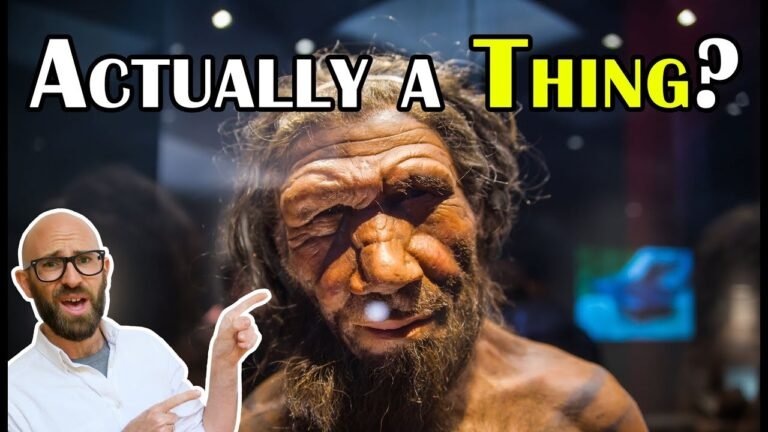Reimagining Identity: The Legacy of Donna Haraway
In an era defined by rapid technological advancement and shifting societal norms, Donna Haraway emerges as a pivotal thinker whose work challenges traditional boundaries between humans, animals, and machines. Her influential ideas, particularly articulated in the seminal Cyborg Manifesto, invite us to reconsider identity, feminism, and the interconnectedness of all living beings in a post-industrial world. As we navigate the complexities of the 21st century, Haraway’s insights offer a compelling framework for understanding the entangled relationships that shape our existence, urging us to embrace a more inclusive and dynamic vision of the future.
What impact did Donna Haraway have on feminism?
Donna Haraway influenced feminism by integrating science, technology, and gender, promoting a more nuanced understanding of identity through her cyborg metaphor and critiques of traditional binaries.
What are the main theories proposed by Donna Haraway?
Donna Haraway’s theories challenge traditional distinctions between humans and machines, proposing that we are best understood as cyborgs—entities that emerge from the interplay between technology and biology. This perspective emphasizes that our identities and experiences are shaped by the technologies we use and the environments we inhabit, blurring the lines between the organic and the artificial. In this view, humans become active participants in a complex web of relationships, rather than isolated subjects or mere objects.
Central to Haraway’s thought is the concept of relationality, which posits that nature is dynamic and ever-evolving, rather than a fixed backdrop for human activity. This challenges the anthropocentric notion of nature as something to be controlled or dominated. Instead, she argues for an understanding of the natural world as a co-creator in the human experience, one that engages in a continuous dialogue with us. This relational approach encourages a deeper awareness of our interconnectedness and the responsibilities that come with it.
Haraway’s insights invite us to reconsider our place within the larger ecosystems of life, urging a shift in perspective that fosters collaboration and respect for all beings. By embracing the idea of cyborgs and relationality, we can cultivate a more inclusive understanding of existence that acknowledges the complexity of our interactions with technology and the environment. This framework opens up new avenues for thinking about identity, agency, and the future of both humans and non-humans in an increasingly interconnected world.
What is Donna Haraway known for?
Donna Haraway is renowned for her groundbreaking contributions to feminist theory and the philosophy of science. With a background in science, she critically examined how societal beliefs about gender intersect with the production of knowledge in various scientific fields. This unique perspective has allowed her to challenge traditional narratives and highlight the biases inherent in scientific practices.
One of her most significant works, The Cyborg Manifesto, published in 1985, has become a seminal text in both feminist discourse and cultural studies. In this influential manifesto, Haraway introduced the concept of the cyborg as a metaphor for the blurring of boundaries between human and machine, nature and culture. This idea not only critiques the limitations of identity politics but also offers a vision of more fluid and inclusive understandings of gender and technology.
Through her work, Haraway has inspired generations of scholars to rethink the relationships between science, gender, and society. Her exploration of these themes continues to resonate today, encouraging a critical examination of how knowledge is constructed and the implications it holds for social justice and equality. By bridging the gap between science and feminist thought, Haraway has left an indelible mark on contemporary intellectual discourse.
What is the meaning of the God trick according to Donna Haraway?
Donna Haraway’s concept of the ‘god trick’ critiques the notion of objective knowledge produced by scientists who claim to possess a god-like perspective, observing reality from an all-knowing vantage point. In her influential 1988 essay, “Situated Knowledges: The Science Question in Feminism and the Privilege of Partial Perspective,” she argues that this illusion of detached omniscience overlooks the significance of personal, embodied experiences that shape understanding. By challenging the idea of universal truths, Haraway emphasizes the importance of recognizing diverse perspectives and the contexts from which knowledge arises, promoting a more inclusive and nuanced approach to science and inquiry.
Exploring the Future of Self in a Digital Age
In an era where technology intertwines seamlessly with daily life, the concept of self is evolving in unprecedented ways. Digital platforms offer new avenues for self-expression, enabling individuals to curate their identities and connect with diverse communities. However, this transformation also raises questions about authenticity and the impact of virtual interactions on our sense of self. As we navigate this digital landscape, it becomes essential to reflect on how these experiences shape our personal narratives and influence our relationships with others, ultimately redefining what it means to be human in a rapidly changing world.
From Cyborgs to Post-Humanism: A New Perspective
The evolution of technology has brought us closer to a future where the lines between human and machine blur. As we integrate advanced artificial intelligence and biotechnology into our daily lives, the concept of the cyborg emerges as a powerful symbol of this transformation. With prosthetics that enhance physical abilities and neural interfaces that expand cognitive capacities, we are witnessing the dawn of a new era where human potential is radically redefined. This shift prompts us to reconsider our understanding of identity, agency, and what it truly means to be human.
As we delve deeper into the realm of post-humanism, we begin to challenge traditional notions of humanity and existence. Post-humanism invites us to explore a world where humans are not the apex of evolution but rather part of a broader interconnected web of life, including artificial beings and enhanced organisms. This perspective encourages a reevaluation of ethical frameworks and societal structures, pushing us to think critically about our responsibilities towards not only ourselves but also the technologies we create and the environments we inhabit.
In embracing this new perspective, we open ourselves to endless possibilities and innovative solutions to contemporary challenges. By fostering collaboration between humans and machines, we can address pressing issues such as climate change, health crises, and social inequality more effectively. The journey from cyborgs to post-humanism is not merely a technological advancement; it is a profound philosophical shift that invites us to envision a future where harmony between humanity and technology leads to greater understanding, empathy, and collective growth.
Challenging Boundaries: Identity in the 21st Century
In the 21st century, identity has become a complex tapestry woven from diverse threads of culture, technology, and personal experience. As globalization fosters interconnectedness, individuals find themselves navigating multiple identities that reflect their heritage, beliefs, and aspirations. This fluidity challenges traditional notions of self, encouraging a more nuanced understanding of what it means to belong in an increasingly pluralistic world.
The rise of digital platforms has further transformed identity construction, allowing voices from all walks of life to emerge and share their stories. Social media serves as both a mirror and a canvas, where people curate their identities, often blurring the lines between reality and representation. This dynamic environment not only empowers individuals but also invites scrutiny and debate, as societal norms are constantly redefined through collective engagement and dialogue.
As we confront these evolving landscapes of identity, the importance of empathy and understanding becomes paramount. Embracing our differences while recognizing shared human experiences fosters a more inclusive society. In challenging boundaries, we invite new perspectives and possibilities, ultimately enriching our collective narrative in this rapidly changing world.
The Intersections of Science, Feminism, and Identity
In today’s rapidly evolving world, the intersections of science, feminism, and identity play a importante role in shaping our understanding of human experience. Science offers a framework for exploring the complexities of gender and identity, pushing the boundaries of traditional narratives that have often marginalized women’s voices. By examining biological, psychological, and sociocultural dimensions, we gain valuable insights that challenge outdated assumptions and empower individuals to express their true selves.
Feminism, in its various forms, serves as a catalyst for change within the scientific community. It advocates for equitable representation and highlights the importance of diverse perspectives in research and innovation. This inclusivity not only enriches scientific inquiry but also fosters an environment where marginalized identities can thrive. As more women and non-binary individuals enter STEM fields, they bring unique experiences that can lead to breakthroughs and advancements that are more reflective of our shared humanity.
Ultimately, the dialogue between science, feminism, and identity is essential for creating a more equitable society. By embracing the contributions of all individuals, we can address systemic biases and develop solutions that cater to the needs of diverse populations. This collaborative approach not only enhances our understanding of identity but also paves the way for a future where everyone has the opportunity to contribute to and benefit from scientific progress.
Haraway’s Vision: Rethinking Who We Are
In an age where technology and biology intertwine, Donna Haraway’s vision challenges traditional notions of identity and existence. By proposing the idea of the cyborg, she invites us to reconsider the boundaries that separate humans from machines and the natural world. This perspective encourages a more fluid understanding of ourselves, highlighting the interconnectedness of all beings and the importance of embracing hybrid identities. Haraway’s work urges us to acknowledge that our identities are not fixed but rather shaped by cultural, technological, and environmental factors.
As we navigate the complexities of modern life, Haraway’s insights prompt us to rethink the narratives we construct about who we are. In a society increasingly defined by digital interactions and technological advancements, her call for a more inclusive understanding of identity resonates deeply. By recognizing that our lives are influenced by a myriad of forces—social, political, and ecological—we can foster a sense of belonging that transcends conventional categories. This shift in perspective not only empowers individuals but also invites collective action toward more equitable and sustainable futures.
Ultimately, Haraway’s vision serves as a beacon for reimagining our roles within a rapidly evolving world. By embracing the concept of the cyborg and the complexities of hybrid identities, we can cultivate a deeper sense of connection with each other and the environment. This rethinking of identity encourages us to challenge outdated boundaries and engage in dialogues that celebrate diversity and interdependence. In doing so, we pave the way for a more inclusive and compassionate society that recognizes the richness of our shared humanity.
Donna Haraway’s work invites us to rethink the boundaries between humans, animals, and technology, urging a more interconnected and ethical approach to our existence. Her insights challenge traditional narratives and inspire new ways of understanding our place in the world, prompting vital conversations about identity, agency, and the future of our planet. As we navigate the complexities of modern life, Haraway’s vision serves as a guiding light, encouraging us to embrace our entanglements and reimagine what it means to coexist in a rapidly evolving landscape.






